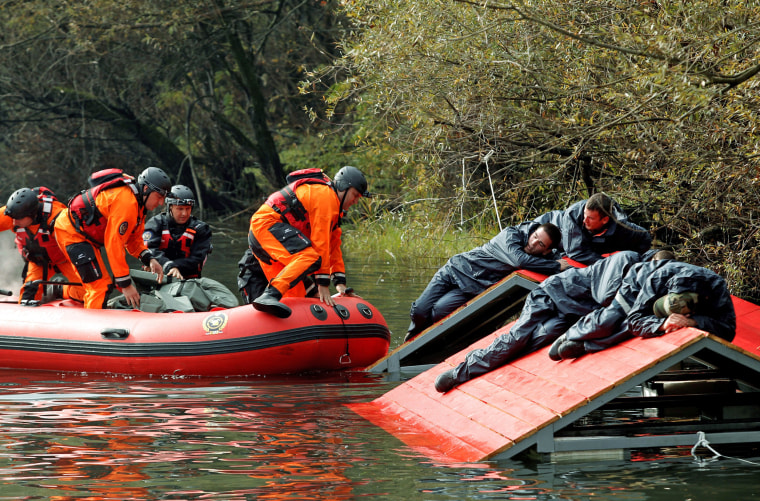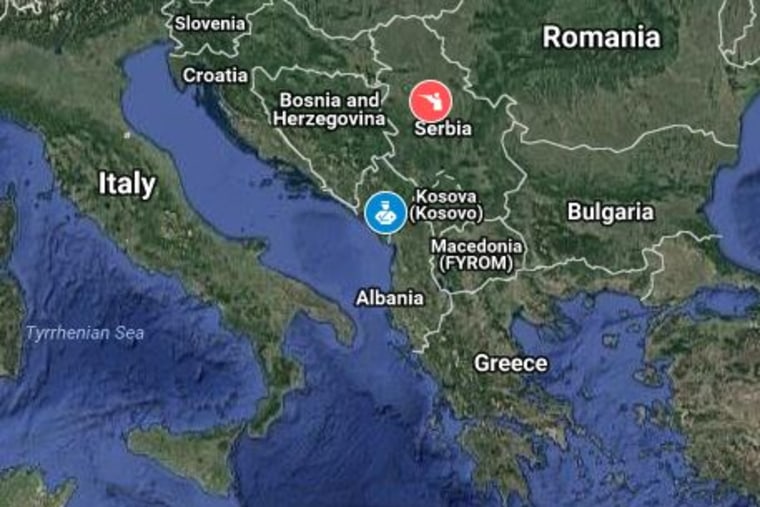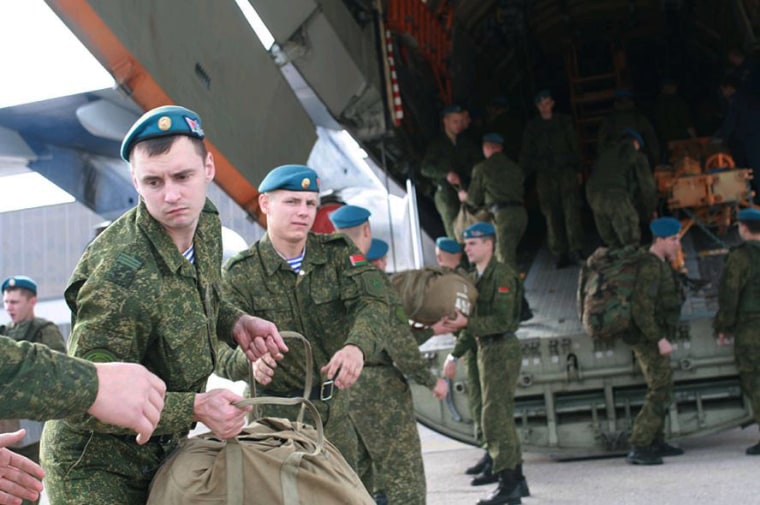American and Russian personnel conducted disaster-relief drills just 150 miles apart in Europe's southeastern Balkan region Thursday — a geopolitical face-off over a country the size of Connecticut.
The tiny nation of Montenegro has this week played host to NATO exercises aimed at preparing for flooding, chemical spills and unexploded bombs. The country — which has a smaller population than Boston — is currently in the process of joining NATO, something Russia sees as an unacceptable symbol of encroaching Westernization on its doorstep.
The exercises have included an American contingent of medics and a mobile laboratory that analyzes chemical, biological, radiological and nuclear contamination.

Just 150 miles to the northeast — around the distance from New York to Baltimore — hundreds of paratroopers from Russia and Belarus deployed into neighboring Serbia on Tuesday for a separate two-week exercise entitled "Slavic Brotherhood."
"Moscow is very resentful toward the U.S. for not just allowing the expansion of NATO but encouraging it right up to the Russian border."
The proximity was likely no coincidence, according to analysts, who said the dueling drills were an attempt by both sides to mark their territory amid frosty relations between Russia and the West.
"Russia wants to show that it can intimidate NATO ... and NATO is saying to Russia, 'If you show up, we'll be there as well,'" according to Igor Sutyagin, an expert at the Royal United Services Institute (RUSI), a London-based think tank.
This was the latest incident in what has become a timeline of rapidly deteriorating relations. Over the past two years Washington and Moscow have exchanged tough words and a series of proactive near misses between their aircraft and ships.

This week's stage — Serbia and Montenegro — were once part of Yugoslavia, a communist state briefly allied with the Soviet Union after World War II. Yugoslavia split after the fall of the Berlin Wall, but Serbia and Montenegro remained the same country until they divided following a referendum in 2006.
Serbia is not a member of NATO but has also held drills with the alliance. However, it has maintained some ties with Moscow, and some Serbs also share the Kremlin's bitterness toward the West after a NATO bombing campaign to end the Kosovo War in 1999.
Related: U.S.-Led NATO in Spotlight as Europe Pushes Joint Army, Defenses
Meanwhile, Montenegro has moved toward the West and is well on its way to joining the military alliance.
The drills this week were not the first held by Russia and Serbia, nor were they the largest by the former Soviet powerhouse. In September, Moscow said that a staggering 120,000 military personnel took part in a month of drills across its southern frontiers.
But seen through the prism of Montenegro's so-called Westernization, the location of the exercises was likely key.
"I would be very surprised if it was coincidence," according to Tate Nurkin, a defense analyst at global consulting firm IHS. "This is the frontline of the ongoing confrontation."
Related: Election Cyberattacks: Pro-Russia Hackers Have Been Accused in Past
For its part, a NATO official claimed that the decision to stage its disaster-relief exercise so close to the Russians was "in no way a provocative exercise." Speaking on condition of anonymity, the official told NBC News that it was only about "allies helping allies in a natural disaster."
Sutyagin, the Russian expert at RUSI, disagreed.

"To say it's a disaster-relief exercise is half true," he said. "There are military and non-military elements involved." NATO said the proportion was around 90 percent non-military.
"This sends a message and I think that's the reason for having these drills so close," he added.
Nurkin said that NATO leaders would be all-too conscious of the ramifications of their choice of venue.
"Any time NATO does something in Montenegro, they will know that Russia will be very aware of it," he said. "Moscow is very resentful toward the U.S. for not just allowing the expansion of NATO but encouraging it right up to the Russian border."
